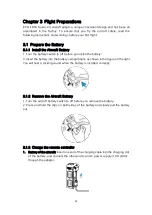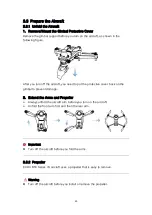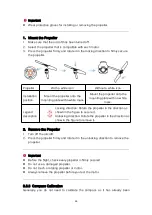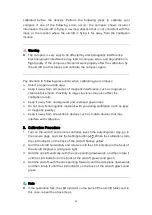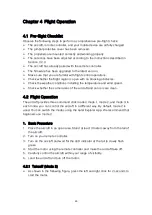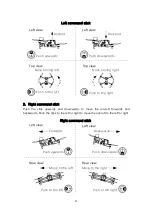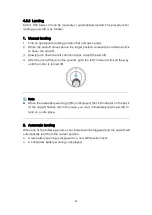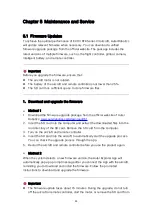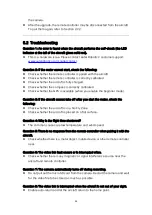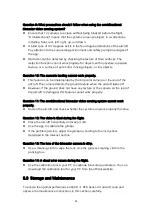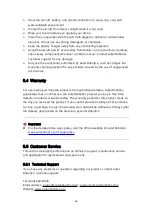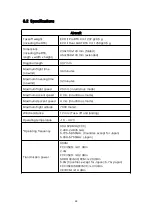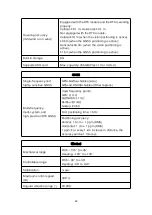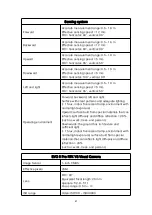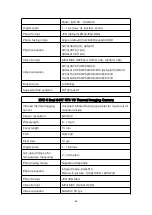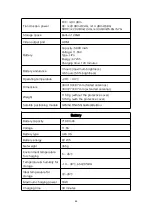
55
Question 9: What precautions should I follow when using the omnidirectional
binocular vision sensing system?
Ensure that 12 cameras are clean without being blocked before the flight.
"Omnidirectional" means that the system can sense objects in six directions,
including front, rear, left, right, up, and down.
A blind zone of 30° degrees exists in the four diagonal directions of the aircraft.
Pay attention to the surrounding environment and safety prompt messages of
the app.
Obstacles can be detected by checking the texture of their surfaces. The
detection function cannot work properly for objects with no texture, repeated
texture, or a surface of pure color, moving objects, or tiny objects.
Question 10: The accurate landing cannot work properly.
This feature can be implemented by the binocular camera on the rear of the
aircraft. The camera detects the ground texture when the aircraft takes off.
However, if the ground does not have any texture or the camera on the rear of
the aircraft is damaged, this feature cannot work properly.
Question 11: The omnidirectional binocular vision sensing system cannot work
properly.
Restart the aircraft and check whether the system can work properly this time.
Question 12: The video is tilted during the flight.
Place the aircraft horizontally and keep it still.
Use the app to calibrate the gimbal.
If the problem persists, adjust the gimbal according to the instructions
described in the relevant section.
Question 13: The lens of the binocular camera is dirty.
Use a cleaning cloth to wipe the lens. Use the glasses cleaning cloth in the
packing box.
Question 14: A visual error occurs during the flight.
Use the calibration tool in your PC to calibrate binocular parameters. You can
download the calibration tool for your PC from the official website.
5.3 Storage and Maintenance
To ensure the optimal performance of EVO Ⅱ RTK Series V3 aircraft, read and
observe the maintenance instructions in this section carefully.


